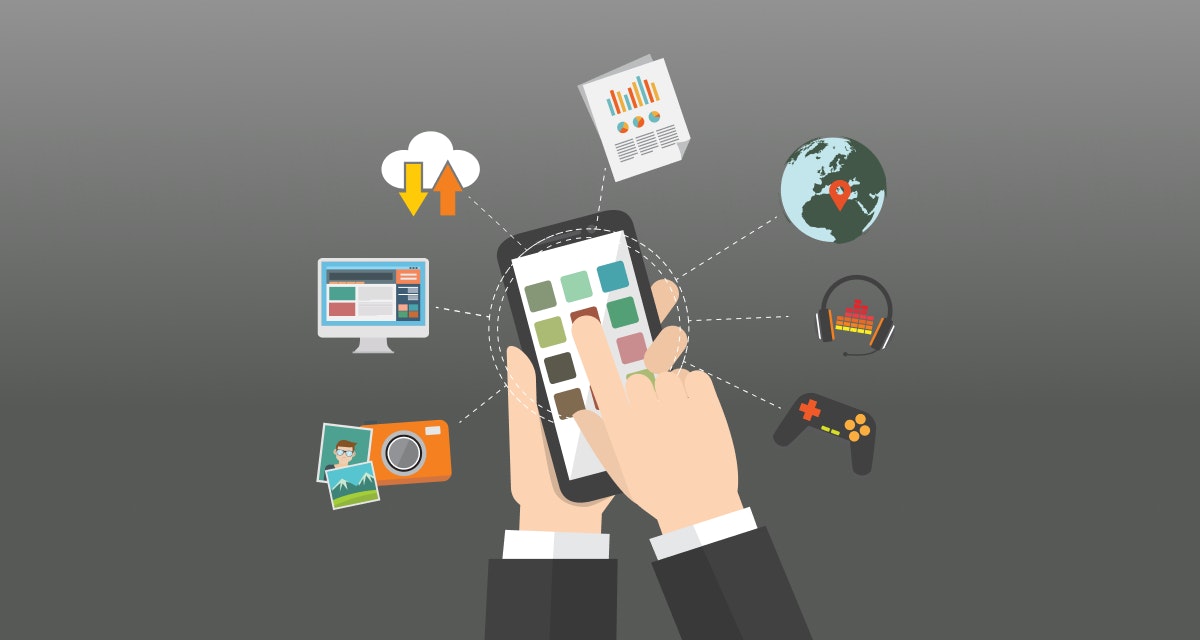If you are planning to build an IT product to automate and streamline your business operations, then you must be aware of product development is more like a journey than a goal. No matter how experienced an enterprise you choose for your product evolution, still, they will not be able to deliver you a full-fledged and efficient product within a year or a similarly short time span.
Instant transformation of an idea into a finished product is quite unrealistic. It requires lots of homework such as analysis of competitors’ products, industry trends, customers’ demands, your business requirements, internal processes, external resources, and much more. Don’t forget to count the efforts, money and time you are going to invest in it.
After studying all these aspects in detail, define a strategy and a roadmap of the product flow. It is suggestive to divide the development into different phases to get the benefits of steady and adequate growth of the product.
Product evolution is a constant process as it has to match the frequently changing standards of competition and customer expectations. Invest your time to read out the core values that a product must deliver to the customers.
#1. Real-time Problem Solving
The prime purpose behind product development is to improve the life of users by addressing the fundamental issues. There are possibilities, today what you see as a problem; may not be the issue after a particular time period. It may be replaced by new problems. Your product must be compatible to address the updated issues. So, continuous product enhancement is equally important as product development to stay competitive in the market.
#2. Divide a Large Project into a Series of Small Projects
While building a large product it is quite tough to identify the risks and areas of improvement. By dividing a big project into a small project, according to its modules, functionality or features, it will be easy to stay focused on developing a particular part of the product. To channelize your efforts, define a set of objectives, activities, and deliverables before the project starts.
#3. Make the Right Product than the Product Right
Focus on building the right product (validation) than the product right (verification). Usually, organizations are willing to launch a perfect product by eliminating minor frictions in various features and functionality to facilitate users with an incredible experience.
Instead of wasting time in the verification of your product whether it is running smoothly or not, try to identify is it appropriate for the recent market requirements. During the enhancement phase, you can improve the performance of your product. However, after launching a full-fledged product, if you realize that it is not up to the mark, then all your efforts are vain.
#4. Prefer to Re-use Over Re-invent
Instead of moving to do something highly innovative in the first trial, it is preferable to re-use the latest tools and technologies to improve the speed-to-market of the product. It also helps you in building a more reliable product with reduced development costs.
#5. Fewer Features Convey Clear Value Propositions
There is nothing wrong with offering a complete product that contains all the features and functions. But we can’t deny that it increases the time-to-market of the product. Also, by introducing too many features, organizations muddle the value proposition of your product.
Focus on delivering essential functions in the first version of your product. Include all the key features in your product that the customers are expecting, but missing in your competitor’s products. Gradually, you can add the required elements and improve the existing aspects on the basis of user feedback.
#6. Attractive Design Appeals More to Users
‘A picture is worth a thousand words.’
Design always entices more to human senses and emotions in comparison to words. The fascinating design creates temptation in the users to try your product once. The visuals are dramatically shaping our perceptions. Hence, design can be a key perception driver and game-changing strategy that increases the user adoption rate of your product. Poor visuals can easily beat a product, even if it contains excellent performance and usability. So always be careful with your product design.
#7. Make Product as Simple as Possible
Not just to add the required features, but also to remove the unnecessary elements during the product development. Cover the core functionality only. It gives a clear idea to the users of what your product is all about. They will feel more comfortable with your product and accomplish their target task or activity quickly.
#8. Personalization Matters a Lot
By offering a standardized product, you cannot satisfy all the users. Keep room for high-end customization as per the specific needs of users. Develop a scalable product that can be easily and quickly customizable. Deliver additional values to the clients by offering a perfect resolution for their precise concerns. If you are interested in facilitating the users with both standardized and customized product development, then here you go.
Develop a standard product that contains all the necessary features. Later on, you can personalize the product by adding the extra features as per clients tailored needs. Define a smart customization strategy and accordingly evolve or integrate the right features, functions, and content in the product. It assists users in attaining the ultimate purpose.
#9. Human Touch is Must
Technology is to support humans. It cannot replace humans. Products are developed to enable the organization to improve its potential by simplifying the process for customers and the workforce.
"Technology can perform the task that humans once did, but still, humans can deliver the extra values where technology cannot."
-
While offering product experience includes humans behind the technology, it supports the product in establishing a human-to-human relationship.
#10. Animation – An Integral Strategy
Insert clever animations and sleek transitions to deliver a delightful experience to the users while they are moving around your product. It should be more than a chuckle or a smiley. Basically, it should be like a user guide. So visitors can operate your system smoothly. It is not compulsory to prepare all the animations at a time and insert them into the product. Launch the first with basic animation; you can improve them in the product enhancement phase.
All set to build a next-generation product? Being one of the early adopters of mobile technologies, Intuz holds proven excellence in creating avant-garde mobile and web products that are highly scalable and flexible in embracing the advanced tools and technologies. We love to simplify IT for you.
If you have mobile or web product development requirements in place, don’t feel hesitant to share with us. Intuz promises to deliver the best product by following top-notch industry standards.
Image Credit: Grupo Staff




